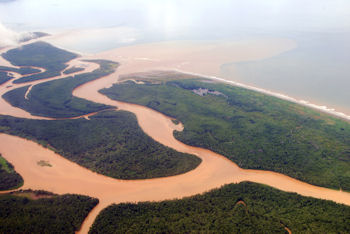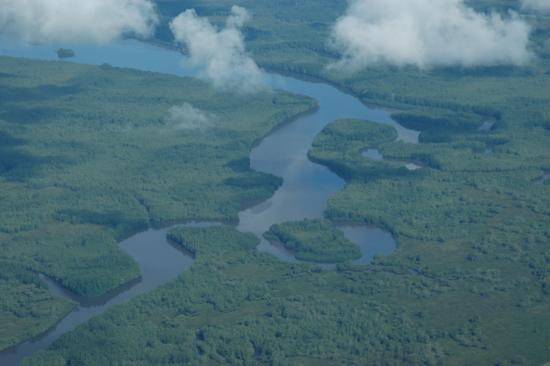
The Térraba River, located in the southern Región Brunca in Costa Rica, is the largest in the country. In the indigenous Baruca language, Diquis means “Great River”. Its basin is 5,085 square kilometers and is 160 kilometers long, covering ten percent of the country.
Terrabas, The native inhabitants of this beautiful land
The Terraba, who inhabit this zone, are a warrior people that have their roots in the pre-Columbian civilization of “Chiriquí” that dominated the country when the Spanish conquerors arrived at the beginning of the 16th century. Compared to other pre-colonial civilizations, there were relatively fewer indigenous people in the area when the Europeans arrived.
The Spanish brought Catholicism and smallpox, and many tribes could not over live both. The Terraba were able to maintain their culture, traditions, and language despite the Spanish occupation and Catholic influence. They have recorded an extensive oral history to preserve it for future generations.
The Chiriquí civilization dates back 10,000 years with evidence in rock shelter caves and stationary camps that correspond to groups of hunter-gatherers. Social and cultural development began then and was at its peak in 600 AD until the arrival of the Spaniards at the beginning of the 16th century.
Terraba river basin

It is a confluence of the General and Coto Brus Rivers. Pineapple plantations occupy 105 hectares in the basin, representing 21 percent of national production. Mangrove cockles are known as locally as “Piangua” are collected in the mangroves and the mud at the mouth of the Rio Grande de Terraba.
The area is completely public-lands and managed by the Ministry of Environment and Energy. The wetland reserve is a natural tourist attraction and is home to an important habitat of many species of birds, freshwater fish and marine (commercial) fish species, mammals and reptiles. The resident and migratory bird species that are often found in the Terraba River include herons, egrets, and cotingas and Pandion haliaetus. Common mammals include Agouti paca and Lutra annectens and reptiles including the alligator. Many of these species depend exclusively on this ecosystem for their entire life cycle; reproduction, growth, and food.
The ecosystem of the Terraba River
The Terraba River wetland is characterized by a wooded ecosystem with periodically flooded swamps and mangroves, swampy palm forests, sandy beaches and cliffs that cover the mouths of the Terraba and Sierpe rivers and the adjacent Sirpe and Porvenir lagoons.
The Terraba River is the main source of freshwater in the estuarine system and drains a basin of approximately 5,000 square kilometers. Its main tributary is the General River along with its tributaries. The Sirpe River that forms the boundary of the mangrove forest also has tributary rivers and streams. The mangrove vegetation of the Terraba River plays a basic role in erosion protection, both from runoff and wind erosion as in the maintenance of water quality. Rainwater and runoff are stored in the wetland.
Terraba and its area of influence are geologically formed by materials from the Cretaceous, Tertiary and Quaternary periods. The materials are of volcanic, erosive or alluvial origin. The alluvial soils that the Terraba river presents, with good to poor drainage are derived from sediments and volcanic ash, the site is periodically flooded by the tides, transferring fine mud rich in organic matter. The weather is very hot and humid and precipitation is abundant from May to November.
The economy of the Terraba River
Within the mangroves of the Terraba River, products are extracted and recollected by groups, families, and individuals. The main income-generating activity in the area comes from the clam crop commonly known as “Piangua”.
Small-scale artisanal fishing is also allowed in the Terraba estuary. The piangua and the mangrove bark found have been harvested by the indigenous Terraba natives for approximately 1200 years. The wetland is also used by tour operators to promote the beautiful landscape, flora, and fauna. Very few people live in the mangroves of Terraba and the main human settlements are in the closest communities which are Sirpe, Palmar, and Cortes.

